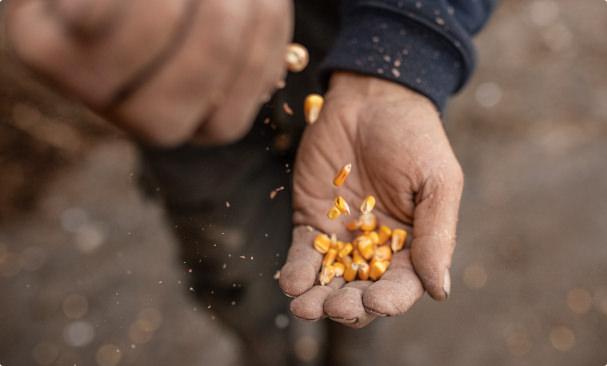Archives
Recent Posts
-
1. Planting Population – target 28,000-34,000 seeds/ac (rate influenced on numerous factors – climate, soil type & productivity, resources available, planting date, hybrid characteristics, chu region, end use, economics)
1 bag = 80,000 kernels/bag > 32,000 seeds/ac = 2.5 bags/acre; 34,000 ac/bag = 2.35 ac/bag
2. Plant corn using a planter > consistent seed placement & consistent seed depth
3. Depth – target planting depth is 1.5 – 2.5”; plant into 0.5” of moisture
- Target this depth to achieve good seed-to-soil contact and good development on the nodal root system (critical for structural support and nutrient and water uptake)
- Goal: even planting depth > even emergence
- Too shallow is worse than too deep
Too Shallow: < 1.5" Too Deep: > 2.5” - Poor development of nodal root system
- Early season lodging
- Poor plant health mid-late season
- Delayed/ no emergence Leafing out underground
4. Soil Temperature – 10 ℃ at planting depth with a 48 hr warming trend
- Corn does not germinate below 10 ℃; corn seed is very temperature sensitive
- Wait for warm soils to avoid imbibitional chilling (within 24 hrs of planting) & cold injury
- Imbibitional chilling occurs when there is a drastic change in the water temperature during imbibition. The critical time for this to occur is within 24 hours of planting.
- Cold Injury is when there is a change in the soil temperature after the seed has imbibed water. Cold injury is typically less severe than imbibitional chilling.
- Cool soils + cool weather > better to leave the seed in the bag
5. Seed Bed Preparation – plant into a firm seed bed with residue well managed
- Poor residue management/ no-till fields can result in hair-pinning of the emerging seedling
- Want seedbed to be firm because seed-to-soil contact is increased and for good nodal root development
- Excess tillage can result in crusting & compaction
- Avoid planting and tilling wet soils
6. Planter Speed – most planters run at 4-5 mph at the fastest
- As speed increases, spacing within the row and depth uniformity is reduced
- Speed is dictated by planters metering abilities
7. Emergence – Optimal emergence conditions: 10 - 16 days; Unfavorable emergence conditions: up to 21 days.
- Even emergence is critical; yield loss from uneven emergence can range from 5-10%
CORN FERTILITY TIPS
Nitrogen (N)
- Critical to profitability > corn has a very high response to N
- Application
- Pre-plant – broadcast & incorporate
- Side band – 4 inches from seed row High salt index products – ammonium nitrate, urea, potash
- Fertigation (through the irrigation pivot)
- Pre-plant – broadcast & incorporate
- Grazing – consider the N left from manure and urine
- General Recommendation Rates
- 1 lb actual N/ target bu of grain
- 150 bu = 150 lbs actual N
- 8-10 lbs of N/ target ton
- 21 ton = 189 lbs actual N
- 1 lb actual N/ target bu of grain
- 63% of plant N is taken up by pollination; 37% of N is taken up during grain fill
- 50% of N supply used between V8 and VT
Phosphorus (P)
- Early season development & growth of root system
- Cold soils have a very slow release of plant available P > Include P in starter fertilizer
- Important after tasseling – continually taken up during grain fill > long season supply is critical
- Starter P response can vary year-to-year based on:
- soil moisture, temperature, crop vigour, hybrid
- Include in the seed row or close to the seed – immobile nutrient
- Depending on soil levels: 10 – 40 lbs P2O5
- Band phosphorus
- Side banded
- Spring, fall or at planting
- Rotation – not recommended to plant corn after canola
Potassium (K)
- Associated with movement of water, nutrients, and carbohydrates within the plant and stalk strength
- Rapid K uptake between V6 and VT/R1 timing
- Application: banding is more efficient than broadcast
- Watch the salinity of the fertilizer
Sulfur (S)
- Available S vs elemental S
- N:S ratio – 10-12:1
- Know what the crop needs and apply for that season

